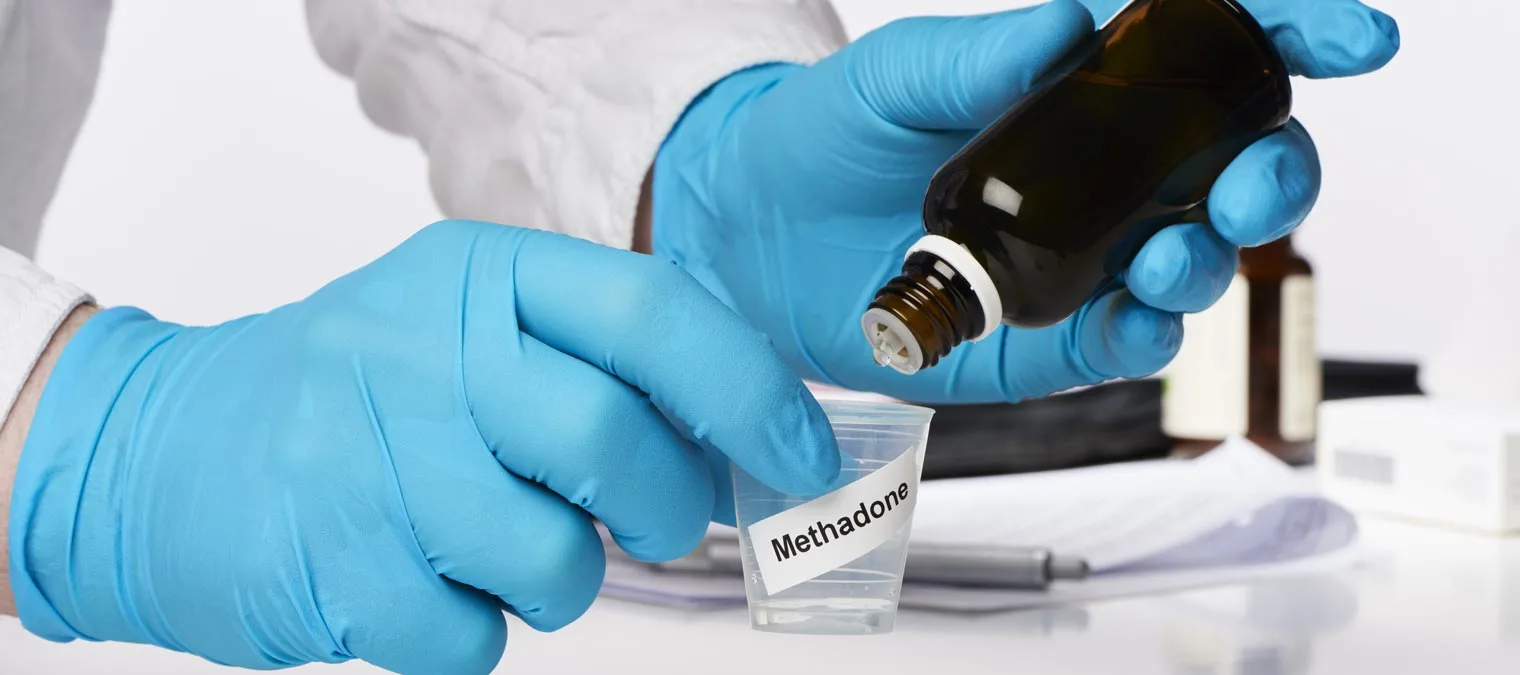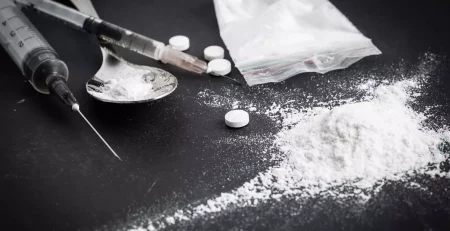How Long Does Methadone Stay in Your System?
Get Answers on Methadone in Your Body and Programs to Quit at Icarus
If you or someone you love has been hurt by opioid addiction, you know just how important it is to get sober as soon as possible. But quitting heroin, fentanyl, and other opioids isn’t just difficult – it can be dangerous as well.
If you’ve begun methadone treatment, and want to get answers as to ‘how long does methadone stay in your system,’ you have found the right resource.
And if you want to put down methadone for the long term, you need medication-assisted treatment from a rehab like Icarus Behavioral Health that can help you do it safely.
Keep reading to learn the answer to “How long does methadone stay in your system,” how methadone can aid in your recovery, and how Icarus can help you get back on your feet.
What Is Methadone and How is It Used Effectively?

Methadone, sometimes referred to by the brand names Dolophine or Methadose, is a prescription opioid agonist that is used to treat pain and help treat opioid addiction safely while under a doctor’s supervision.
It comes in solution, powder, or tablet form but can also be given through an injection in a hospital setting if withdrawal symptoms make it difficult to keep the medication down.
Methadone prevents dangerous withdrawal symptoms from heroin, oxycodone, or fentanyl while maintaining a much lower addiction risk because it doesn’t produce the same levels of euphoria, making it ideal for medication-assisted treatment in drug rehab.
However, it can still become habit-forming, so it should only be taken while under a doctor’s supervision to avoid a methadone addiction.
How Does Methadone Work in the Body?
As an opioid agonist, methadone works by attaching itself to the same opioid receptors that drugs like heroin or fentanyl would activate. However, it acts much more slowly than other opioids, which provides longer-term relief from cravings and withdrawal symptoms as it continuously activates the opioid receptors without reaching a concentration that would create a high in habitual users.
By attaching to these receptors, it also blocks the effects of other opioids, discouraging continued abuse while undergoing treatment with methadone. At Icarus Behavioral Health, we offer alternatives to methadone, such as Suboxone, Subutex (in limited cases) and Naltrexone.
Get Options for Methadone Detox – Reach Out Now!
What are the Most Common Side Effects of Methadone?
Methadone, like many other narcotics, poses the greatest threat to your health when you take too much of it. Overdosing on opioids causes depressed breathing with difficulty, a slowed heart rate, loss of consciousness, and, ultimately, death.
These risks are especially high if you have an existing heart or lung condition, have impaired liver function, or take other sedatives that can magnify the sedating effects methadone produces.
Less serious side effects include:
- Fatigue
- Nausea or vomiting
- Sleep changes and increased exhaustion from methadone
- Headaches
- Mood changes
- Skin reactions
More serious side effects include:
- Rapid heartbeat
- Confusion
- Extreme drowsiness
- Trouble breathing
- Seizures
- Weakness
Are There Risks of Abusing Methadone?

Methadone doesn’t produce the same intense effects as other opioids, but it’s still an opioid that has a risk of addiction. This lesser intensity may actually encourage abuse and lead to an overdose if you take too much in an attempt to get high, making it essential to know how long methadone will stay in your system.
Taking methadone along with other opioids can be equally dangerous because it dulls the high produced by other drugs, encouraging you to take more to achieve the same feeling without knowing how high of a dose of opioids you’ve already taken.
Some users may also abuse methadone as a way to reset their opioid tolerance. When taken correctly, it can help you get past withdrawal symptoms and allow your brain to begin to adjust to having less dopamine. However, once you’ve “reset” your brain’s chemical balance, it becomes easier to disrupt it with smaller amounts of drugs and continue feeding your addiction.
How Long Does Methadone Stay In Your System?
When you take methadone orally or via injection, the drug enters your bloodstream before being processed and filtered over time by your liver. The mild effects of methadone are usually not noticeable physically like they are with other opioids.
So, it’s hard to tell how long it stays in your system based on feeling alone – but we can make an estimate on a methadone half-life range.
Factors That Impact How Long Methadone Will Stay In Your System
The most important factor to consider when asking “how long does methadone stay in your body” is its half-life. A half-life is the amount of time it takes for that drug to reach half of its original concentration in your body from metabolization. Each drug has an estimated base half-life in a controlled environment, but there are a lot of factors that impact how long opioid drugs stay in your body.
Your liver health, the dose of the drug you’ve taken, your age, your weight, and how often you’ve taken the drug in the past all affect how long methadone will stay in your system.
A weakened liver means a lower metabolism, causing the methadone concentration to lower more slowly and leading to a longer half-life in your body. Weight and age can also impact your metabolism, with obesity potentially causing you to retain a higher concentration of methadone for longer in fat cells because it’s a fat-soluble substance.
Methadone and the Metabolic Process: Additional Considerations
In addition to the rate at which you metabolize methadone, the dosage and frequency that you take also control how long it lasts. Higher doses, while still getting cut in half throughout the half-life, will remain clinically significant for longer because there is more to get rid of. Plus, if you have a methadone addiction or take other drugs regularly, your body gets better at metabolizing them, leading to shorter half-lives.
Generally, it takes about five half-lives for a drug to be totally eliminated from your body. Methadone is believed to have a half-life between 33 and 46 hours at the standard 20 mg dose, but it can vary extensively from person to person. Some sources report methadone will stay in your system for as few as 8 hours or as many as 59 hours.
So, how long does methadone stay in your system? Anywhere from two to 12 days, with an average of about eight days.
Can Methadone Be Detected on Drug Tests?

Despite being an opioid, methadone doesn’t show up in your system on a drug test for heroin or oxycodone. Its chemical composition is different, which causes it to be missed on most standard drug tests that you would take for work or school.
If you want to detect methadone addiction, you would need to request methadone drug tests specifically, so you don’t have to worry about false positives for illegal opioids impacting your recovery.
Get Effective Detox and Rehab Options – Call Now!
How Long Is Methadone Detectable on Various Tests?
Methadone drug tests come in a variety of different types, and each of them has its own window for detection that can greatly impact how long methadone is detectable. Depending on the type of drug test, detection is anywhere from 30 minutes to nine months.
How Long Is Methadone Detectable In Urine?
Urine tests are one of the more well-known and frequently used methadone drug tests because they’re easy, inexpensive, and have a 10-14-day window to detect methadone that begins within a day of use.
How Long Is Methadone Detectable In Blood?
Blood tests require blood to be drawn, making it more intimidating for patients, resource-intensive, and expensive. It also has the shortest window of detection, starting within about three hours of ingestion and lasting for up to three days.
How Long Is Methadone Detectable In Saliva?
Saliva tests are uncommon but generally have a similar detection window to blood tests. They can detect methadone within 30 minutes because it’s taken orally and it lasts for three to four days.
How Long Is Methadone Detectable In Hair?
Hair tests provide delayed results but have the longest period of detection. You can test a few weeks after methadone was taken, allowing your hair to grow with traces of the drug in your hair follicles.
Once it’s detectable, you’ll test positive for as many as nine months in some cases.
Opioid Addiction Treatment Options

Whether it’s heroin, fentanyl, or methadone addiction, being addicted to opioids creates an unsustainable lifestyle and puts your health at risk. It’s not easy to overcome an addiction without help, but there’s hope with our high-quality drug treatment program offerings at Icarus.
You may already know that you can’t overcome opioid addiction alone. Quitting “cold turkey” without medical supervision can be fatal, and attempting to wean yourself off can put your health at risk.
Synthetic opioid treatment using drugs that stay in your system like Suboxone is commonly used to slowly end your dependence on other drugs. But, these drugs can be addictive if abused and dangerous if you take them with other opioids while they’re still in your system.
Medical Detox
Opioids are highly addictive and have a high risk of complications from withdrawal, which makes detox the first step for many people seeking help. As part of a medical detox, your care team will slowly wean you off of the drugs using medication-assisted treatment.
The specific medication will depend on the severity of your addiction and the substance you’re addicted to, but it may include Suboxone to curb withdrawal symptoms until it clears your system in a week or two.
Icarus Offers Effective Treatment Programs at Every Level of Care
Once you’ve recovered from addiction physically, you’ll take the next step into a certified opioid treatment program. There are two primary types of addiction treatment programs: inpatient rehab and outpatient programs.
Inpatient rehab is the preferred setting for clients with more serious addictions that require regular monitoring for safety reasons or people who need to escape an environment full of triggers. During this treatment plan, you’ll live at the rehab facility and participate in the schedule your care team develops for you on a daily basis. These activities can include cognitive-behavioral therapy to help identify the cause of your addiction, group therapy to help you feel less alone, and other holistic approaches to mind, body, and soul recovery.
Outpatient Services to Support Lasting Recovery

Outpatient addiction treatment programs aren’t overnight. Instead, you’ll attend therapy and appointments at the treatment center before going home at night, like attending an individual or group therapy session once or twice a week. Intensive outpatient is a more intense form of outpatient therapy where you’re required to attend for a certain number of days and hours each week as part of your treatment plan.
After completing your initial program, your program coordinator should organize ongoing care with a doctor at the treatment center you attended or closer to your home if you traveled for rehab so you can continue to grow, learn, and maintain sobriety.
Up To 100% of Rehab Costs Covered By Insurance – Call Now!
Reach for Support at Icarus and Put Methadone in Your Past
Beating substance abuse, especially opioid dependence, is no easy task. But, with the help of an expert team, evidence-based practices, and the desire to want to improve, you can overcome your opioids – and Icarus can help.
Icarus Behavioral Health in Albuquerque is the premier addiction recovery center and rehab in New Mexico. Our programs employ a comprehensive and holistic approach to addiction, including dual-diagnosis programs to help identify and treat any underlying conditions that may be contributing to your drug use.
Take a huge stride towards a better life. Make the confidential call today to learn more and get started!
References
- https://www.cdc.gov/opioids/basics/epidemic.html#:~:text=From%201999-2021%2C%20nearly%20645%2C000,prescription%20and%20illicit%20opioids1.
- https://www.ncbi.nlm.nih.gov/pmc/articles/PMC6339814/
- https://www.ncbi.nlm.nih.gov/pmc/articles/PMC2042854/pdf/bcp_0591.pdf
- https://www.ncbi.nlm.nih.gov/pmc/articles/PMC7508170











